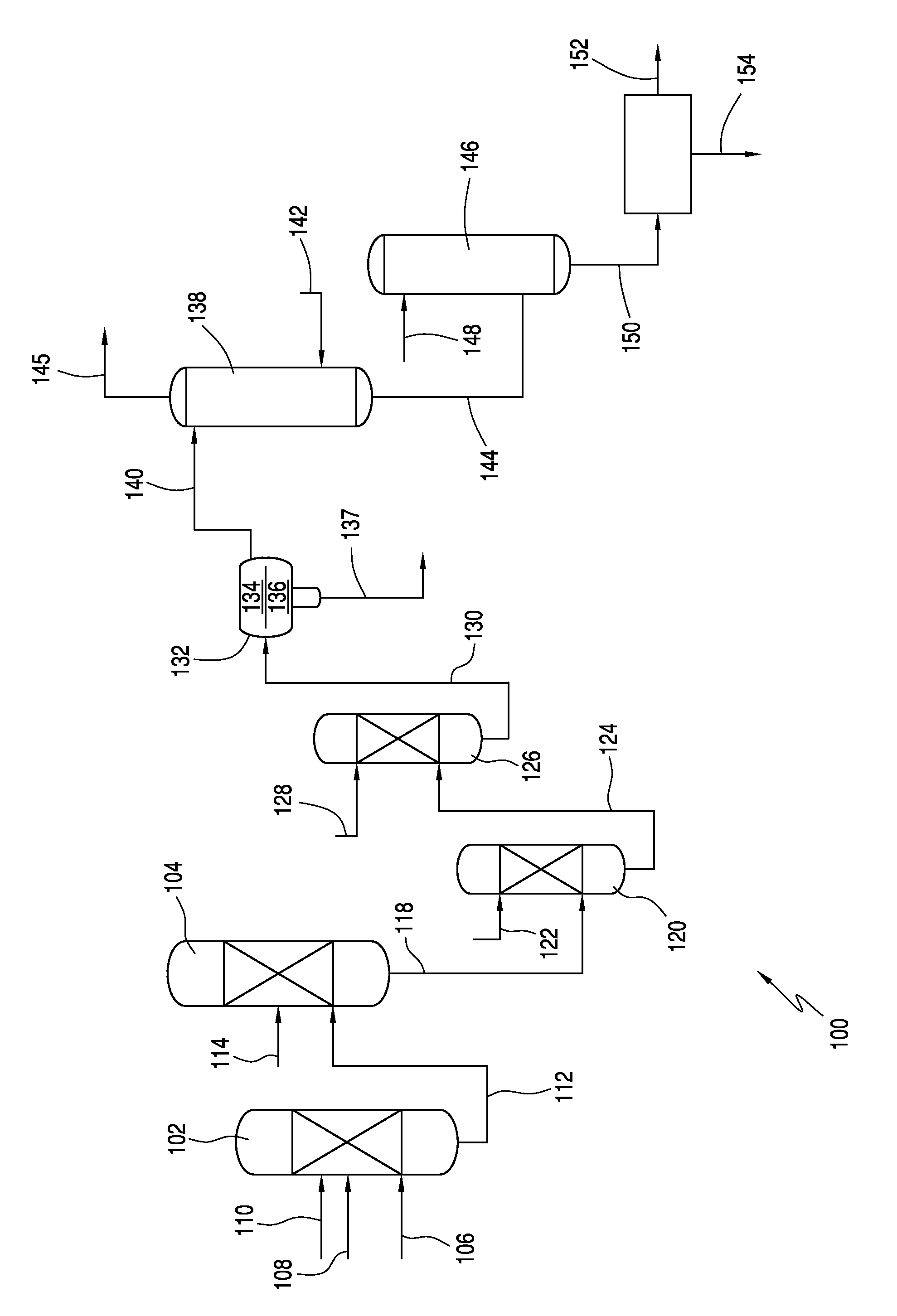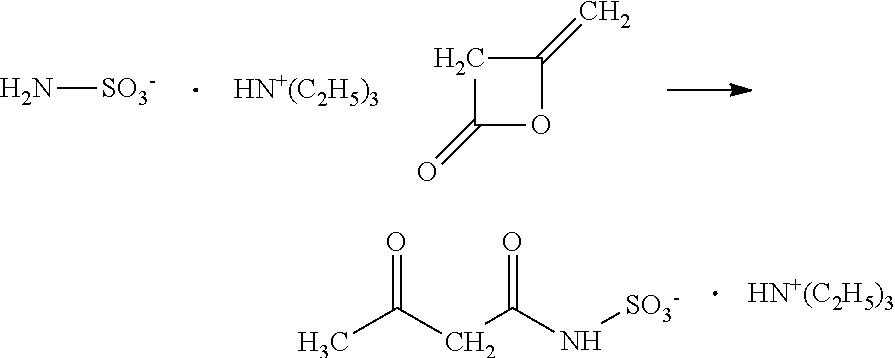Process for producing acesulfame potassium
a technology of acesulfame and potassium, which is applied in the preparation of sulfuric acid amide, amino compound preparation, food preparation, etc., can solve problems such as coloration problems
- Summary
- Abstract
- Description
- Claims
- Application Information
AI Technical Summary
Benefits of technology
Problems solved by technology
Method used
Image
Examples
Embodiment Construction
Introduction
[0010]Conventional processes for producing acesulfame-K react sulfamic acid, an amine and acetic acid to form an amidosulfamic acid salt. Typically, under production-scale conditions, the acetic acid is added to the sulfamic acid and amine to initiate and efficiently maintain the reaction. As such, the acetic acid is typically present in higher amounts, e.g., greater than 1 wt %, based on the total weight of the reactants in the reaction mixture (not including solvent). If solvent is included in the weight percentage calculation, the acetic acid typically may be present in an amount greater than 0.15 wt %. The reaction is usually conducted in excess of amine, which drives up the pH at which the reaction is conducted. The amidosulfamic acid salt is then reacted with an acetoacetylating agent, e.g, diketene, to form an acetoacetamide salt. The use of excess amine and the accompanying increase in pH has been found to cause coloration problems in the resultant acetoacetamide...
PUM
| Property | Measurement | Unit |
|---|---|---|
| mol % | aaaaa | aaaaa |
| temperature | aaaaa | aaaaa |
| temperature | aaaaa | aaaaa |
Abstract
Description
Claims
Application Information
 Login to View More
Login to View More - R&D
- Intellectual Property
- Life Sciences
- Materials
- Tech Scout
- Unparalleled Data Quality
- Higher Quality Content
- 60% Fewer Hallucinations
Browse by: Latest US Patents, China's latest patents, Technical Efficacy Thesaurus, Application Domain, Technology Topic, Popular Technical Reports.
© 2025 PatSnap. All rights reserved.Legal|Privacy policy|Modern Slavery Act Transparency Statement|Sitemap|About US| Contact US: help@patsnap.com



